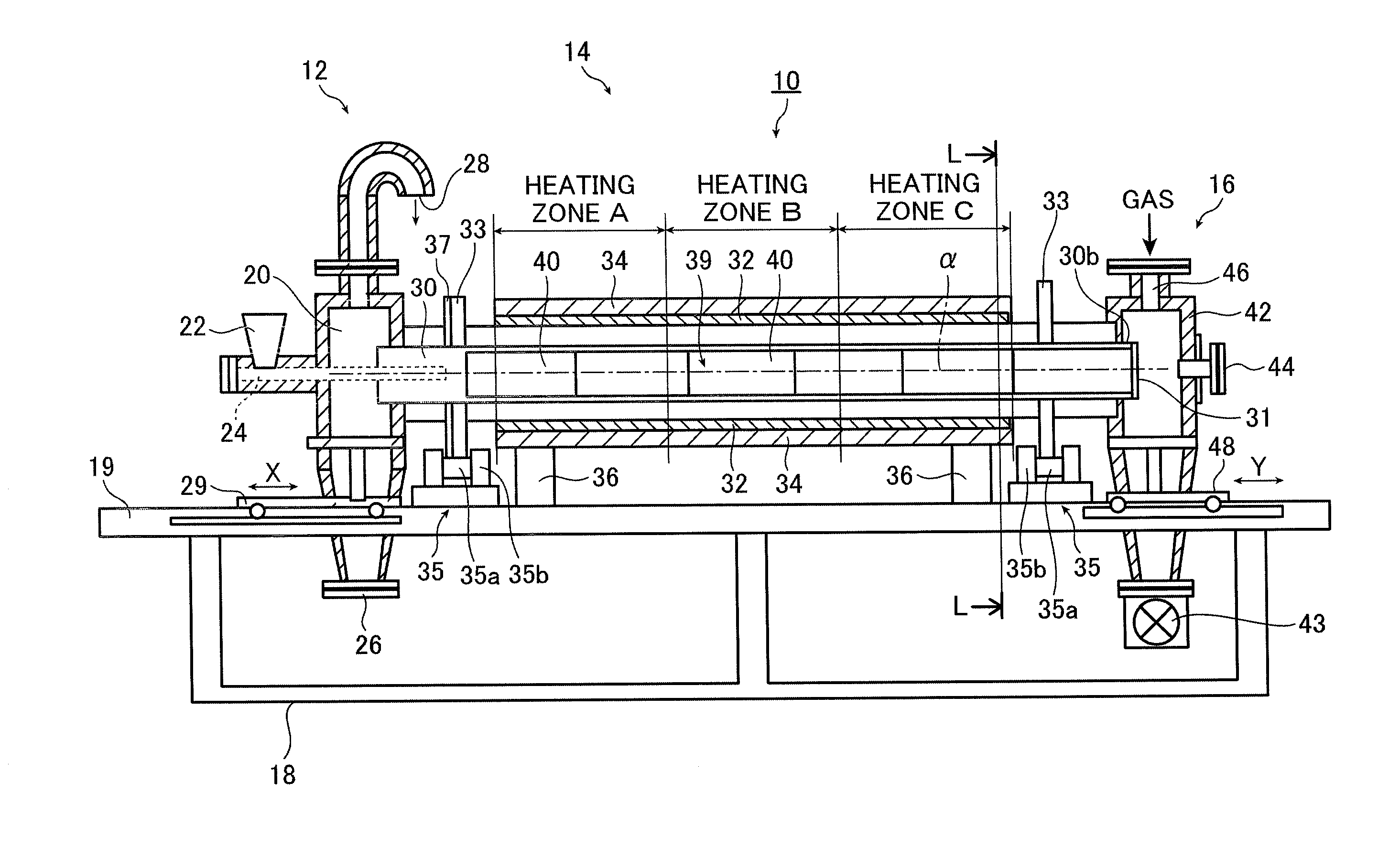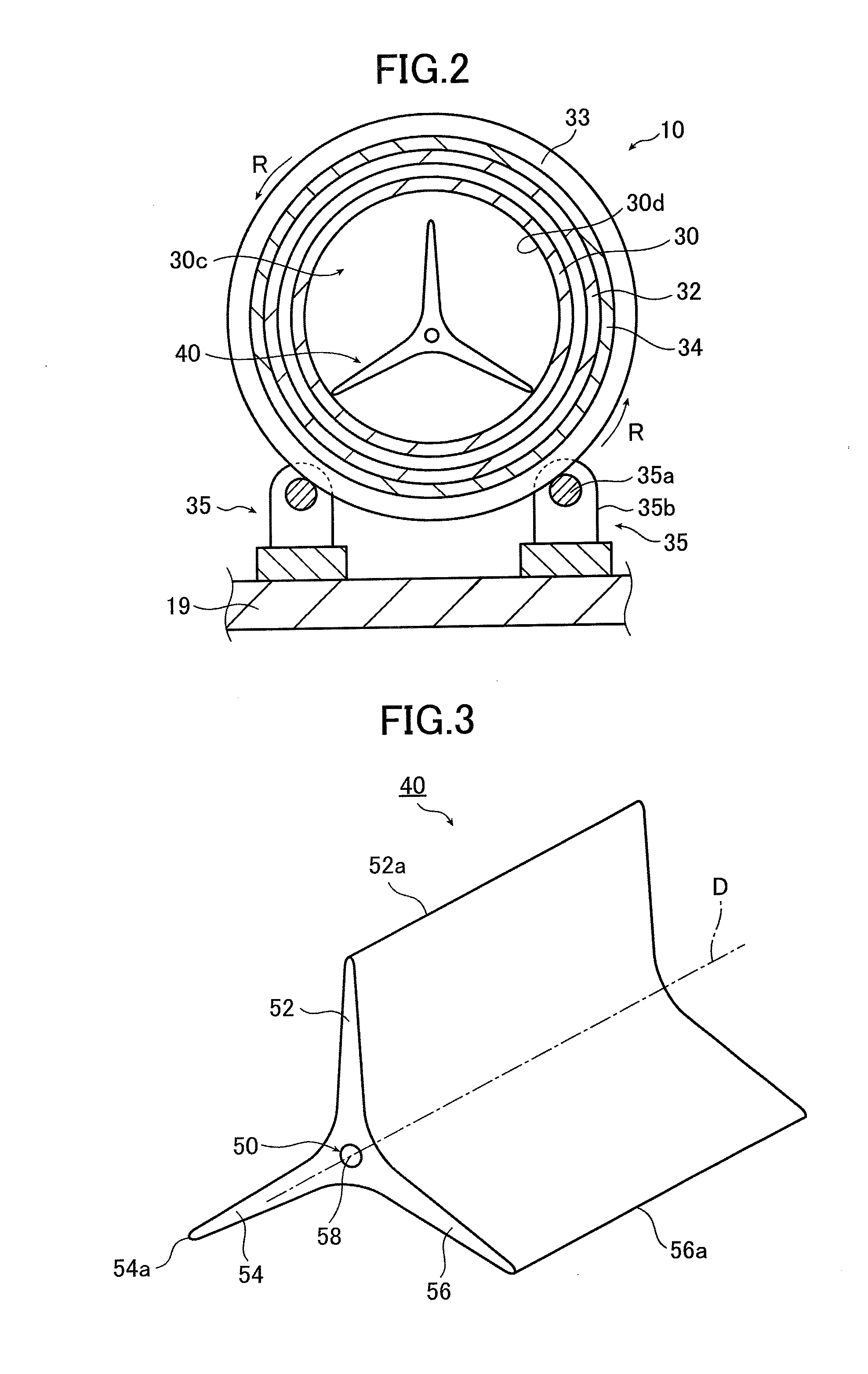Rotary agitation type heat treatment apparatus
- Summary
- Abstract
- Description
- Claims
- Application Information
AI Technical Summary
Benefits of technology
Problems solved by technology
Method used
Image
Examples
example
[0128]An example of the rotary agitation type heat treatment apparatus of the present invention is illustrated below.
[0129]In the example, raw materials for a positive electrode material for secondary lithium-ion batteries were used as the material to be treated, so as to produce the positive electrode material for secondary lithium-ion batteries.
[0130]The raw materials as used for the positive electrode material for secondary lithium-ion batteries were lithium carbonate (Li2CO3) and manganese dioxide (MnO2). Lithium carbonate and manganese dioxide were combined together at a molar ratio of 1:1 and mixed, and the mixture was granulated. After sieving, granulated powder having such a particle size composition that particles with a diameter of not more than 0.25 mm comprise up to 20 wt % of the whole powder was finally obtained, and used as the material to be treated.
[0131]During the granulation, Roller Compactor model WP (manufactured by Turbo Kogyo Co., Ltd.) was used to conduct con...
PUM
 Login to View More
Login to View More Abstract
Description
Claims
Application Information
 Login to View More
Login to View More - R&D
- Intellectual Property
- Life Sciences
- Materials
- Tech Scout
- Unparalleled Data Quality
- Higher Quality Content
- 60% Fewer Hallucinations
Browse by: Latest US Patents, China's latest patents, Technical Efficacy Thesaurus, Application Domain, Technology Topic, Popular Technical Reports.
© 2025 PatSnap. All rights reserved.Legal|Privacy policy|Modern Slavery Act Transparency Statement|Sitemap|About US| Contact US: help@patsnap.com



